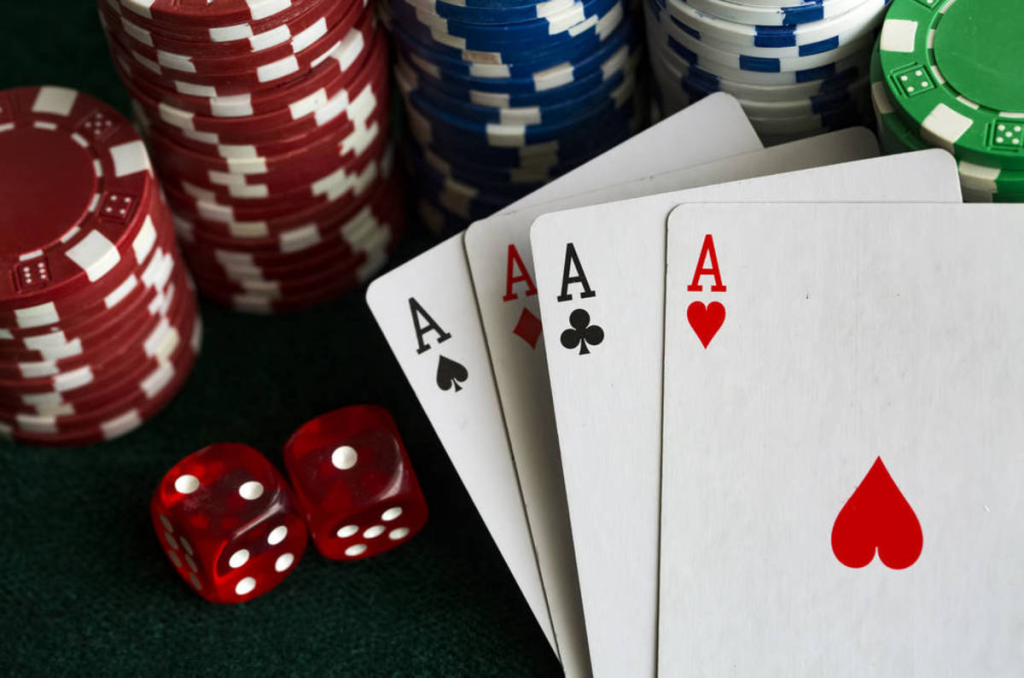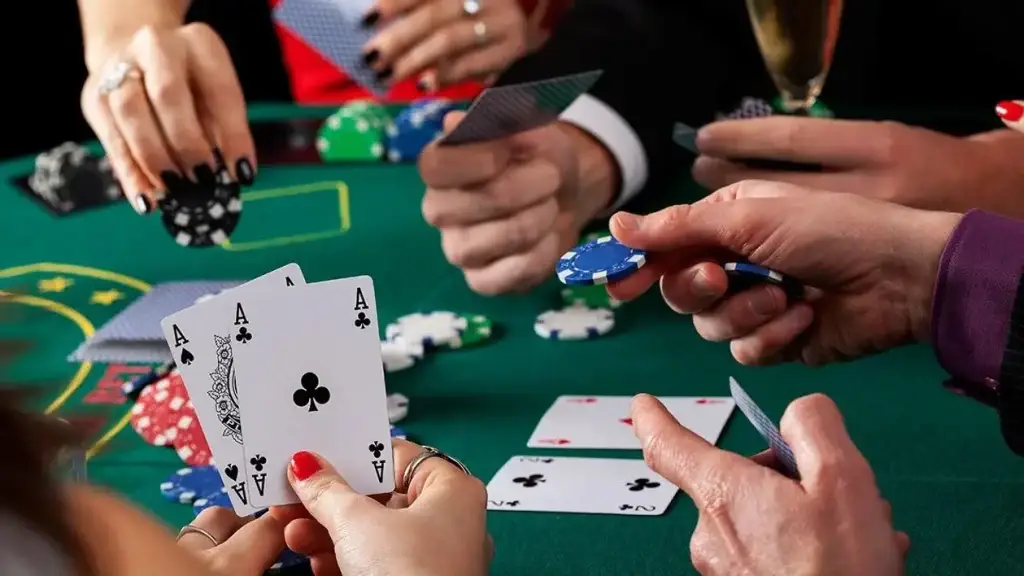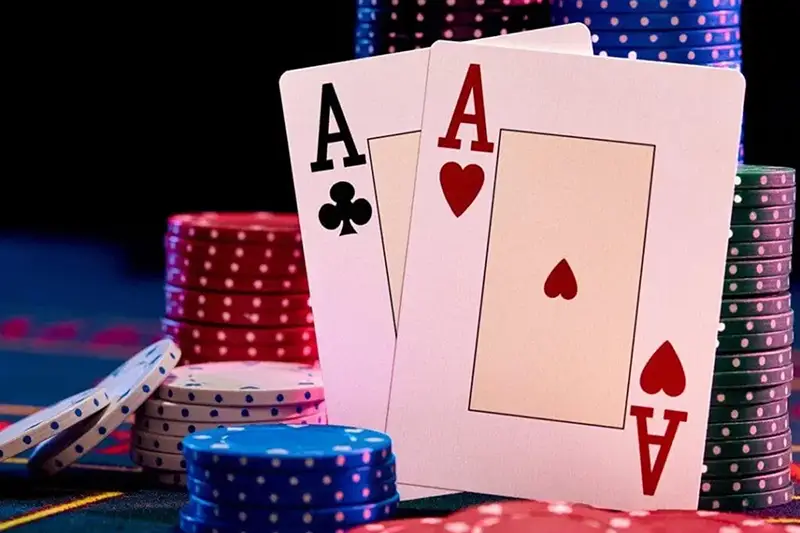Poker is not just a matter of chance, it is the art of decision making. Behind a successful bluff and confident bets there is a deep analysis of the situation and an understanding of the psychology of your opponents. Do you want to learn how to play like a pro? Then you need to learn the basic rules and features of poker, which we will consider in this article. The focus is on the classic Texas Hold’em. This is a popular variation that requires knowledge of combinations and the ability to bargain correctly.
The goal of the game
There are two ways to win in poker: collect the strongest combination of cards or force opponents to leave the game earlier. Players receive two personal cards, and five community cards appear on the table. The winner is the one who collects the best combination of five cards.
Even if you have the highest card in your hand, it does not mean that you will win. Your main task is to understand in time when it is better to fold the cards and when to take a risk and resort to bluffing.
Features of the game
 The ability to control the bidding is the basis of victory. Even if you have a weak starting hand, the right strategy will allow you to win. In poker, it is not only the card combinations that matter, but also how the player manages the bets and evaluates the odds.
The ability to control the bidding is the basis of victory. Even if you have a weak starting hand, the right strategy will allow you to win. In poker, it is not only the card combinations that matter, but also how the player manages the bets and evaluates the odds.
Every decision at the poker table can change the course of the game. Waiting for the right moment to raise or fold is the key to success.
Poker Rules: Card Combinations
Success in poker often depends on how well the player understands the rules regarding card combinations. Even with the strongest hand, you can lose if you do not take into account the behavior of your opponents.
High Card
When there is no combination in your hands, the outcome of the game can be decided by the highest card. For example, if the board shows Q, K, 10, 3, 7, and you have an ace in your hand, it means that the player wins thanks to the strongest card. It often saves in situations where other combinations do not work out.
Pair
A pair is two cards of the same value. Example: two nines in hand with a layout of 3, 7, 9, 10. Even a pair, played correctly, can bring victory.
Set
A set is three identical cards. Example: three fives, if two of them are in hand and one is on the table. This combination is quite strong, especially if the opponents do not suspect the presence of a set.
Straight
A straight is a combination of five cards in a row by rank, but of different suits. Example: 6, 7, 8, 9, 10. A straight is a strong combination, but can be beaten by others, such as a flush or a full house.
Flush
A flush is five cards of the same suit. For example, J, 7, 9, 3, 5 all hearts. A flush is especially appropriate if you collect it closer to the end of the game. Opponents may not expect such a combination, which gives an advantage at the betting stage.
Full House
A full house is a combination of a pair and a set. For example, three kings and two queens. This is one of the strongest combinations in poker, which rarely loses. A full house is usually used for aggressive play and to increase the bank.
Four of a Kind
Four of a Kind are four cards of the same rank. Example: four kings. Four of a Kind almost always wins the hand, since only a straight flush or a royal flush can beat it. A player who gets a four of a kind can safely increase the bets, knowing that the opponents have little chance of winning.
Straight Flush and Royal Flush
Straight Flush are five cards of the same suit, in a row. Example: 5, 6, 7, 8, 9 of the same suit. Royal Flush is the highest combination, consisting of an ace, king, queen, jack and ten of the same suit. Royal Flush is extremely rare, but when it appears, the opponents are left behind.
Poker Rules: Betting
Betting in poker is the heart of the game. Even a weak hand can lead to victory if you manage your bets correctly. Control over betting allows you to manipulate your opponents, forcing them to make the wrong decisions.
Fold and check
Fold is a decision to fold your cards and leave the hand. Sometimes this step saves you from big losses.
According to poker rules, a check allows you to stay in the game without making additional bets. This action is used when there is no need to risk, and you can see how things will develop.
Raise and re-raise
Raise is an increase in the bet. Knowing the right moment for a raise is a crucial skill. It is used to put pressure on your opponents and demonstrate the strength of your hand.
Re-raise is an even more aggressive strategy when a player raises the bet after someone has already raised.
All-in
All-in is a bet of all your chips. This is the moment of truth in poker, when everything is on the line. All-in is used both with a strong hand and when bluffing.
Positions at the Poker Table
Are there any rules in poker regarding position at the table? No, but a player in a favorable position can observe the actions of his opponents and make decisions with greater confidence. Therefore, this issue requires maximum attention.
Basic positions at the table
The most favorable is the button, the player sitting last. The button always makes a bet after everyone else has made their decisions. This allows you to control the game and manipulate the bets of your opponents.
Blinds are players who are required to bet a certain amount before the cards are dealt. The small and big blinds are under pressure, since they have to make decisions first.
How positions affect betting
Players sitting in early positions are vulnerable, since they are forced to make decisions without information about the intentions of their opponents. In later positions, such as the button and the cut-off, participants receive more information and can act more aggressively, which gives them an advantage in betting.
Remember the rules of poker and dare
 Every step, from choosing a position to deciding on a bet, can change the outcome of the game. Learning the basics, card combinations in poker and the rules of proper behavior at the table is the first step to success. To better understand all the nuances, to understand the basics, it is worth trying to consolidate the rules in practice. After all, only experience and attentiveness turn a beginner into a real master.
Every step, from choosing a position to deciding on a bet, can change the outcome of the game. Learning the basics, card combinations in poker and the rules of proper behavior at the table is the first step to success. To better understand all the nuances, to understand the basics, it is worth trying to consolidate the rules in practice. After all, only experience and attentiveness turn a beginner into a real master.





 Players think that calculating probabilities in poker requires complex calculations, but in practice there are fast and accurate methods that allow you to determine in seconds how favourable it is to continue playing.
Players think that calculating probabilities in poker requires complex calculations, but in practice there are fast and accurate methods that allow you to determine in seconds how favourable it is to continue playing. Probabilities in poker are the foundation on which a successful strategy is built. Without a proper calculation of odds, a player risks losing money in the long run. The ability to analyse outs, calculate the odds of combinations and estimate pot odds gives you an advantage at the table. The more accurate the tools you use, the less chance there is. Prepared tables and clear mathematical calculations allow you to make quicker decisions and avoid common mistakes.
Probabilities in poker are the foundation on which a successful strategy is built. Without a proper calculation of odds, a player risks losing money in the long run. The ability to analyse outs, calculate the odds of combinations and estimate pot odds gives you an advantage at the table. The more accurate the tools you use, the less chance there is. Prepared tables and clear mathematical calculations allow you to make quicker decisions and avoid common mistakes.